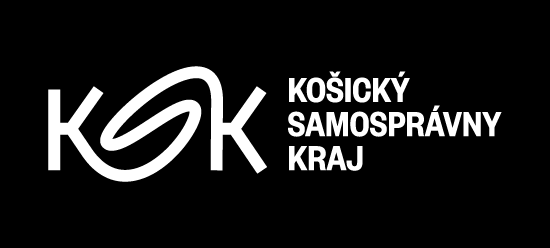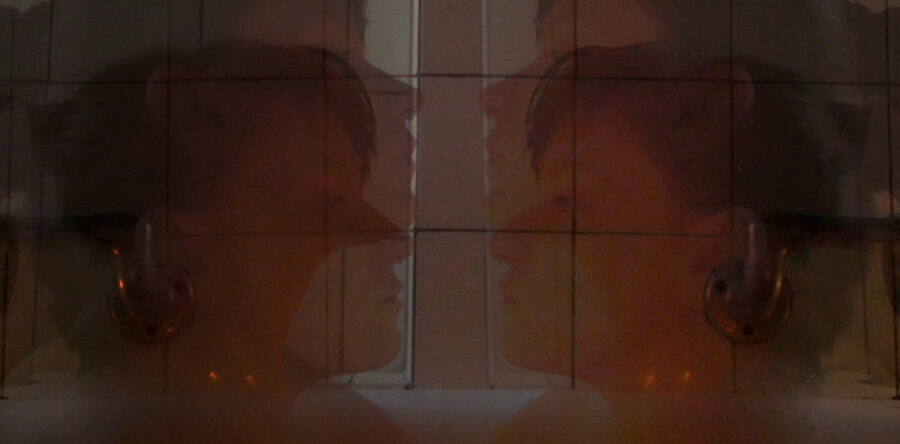Opening: 2. 11. 2023 at 6PM
Exhibition duration: 3. 11. 2023 – 30. 3. 2024
Curator: Michal Štofa
Exhibition space B, Hlavná 27, Košice
This exhibition presents a curated selection from the collection of the East Slovak Gallery, created exclusively by women.
The focus on the results of creative activities of only one gender arose from ongoing research during a reassessment of the gallery’s collection, the formation and updating of the acquisition strategy, and above all from the need to reflect on themes that have long been overlooked or still not sufficiently addressed. One of the themes is related to the disproportion of the representation of women artists in the collections of art institutions and their subsequent presentation. The urgency and topicality of this problem is reflected not only in the concurrent exhibitions thematising the position of women artists and their works in the world, but also in the fragile and balancing awareness, ignorance or even rejection of the need for gender equality in society. The selected 45 works by established female artists represent a significantly reduced collection of 627 works by women which are currently included in the gallery’s collection. The works on display, created between the 19th and 21st centuries, thematically represent a diverse range from genre motifs, personal lyricism, critique of war and violence, criticism of society, religious motifs, themes of femininity and motherhood, as well as landscapes, still life and portraiture. They are executed in a wide range of artistic media including drawing, printmaking, painting, photography, screen printing, video, ceramics, woven textiles and objects. Their layout in the exhibition does not emphasise chronology, but invites the viewer to scrutinise the artworks, compare them with other pieces, and reconsider the criteria for judging works established at the time of their creation. Works displayed in groups and compositions highlight different artistic approaches within different periods (Marie Schulzová, Mária Bartuszová, Viera Kraicová), artistic media or authorial language, or conduct a non-verbal dialogue (Agneša Sigetová, Hra o šedý bod (Game for a Grey Point), 1987; Viera Žilinčanová, Jar (Spring), 1980.
The differences or contrasts between different works may not be clearly visible at first sight. A pair of works with similar colour tonality may form a harmonious pair, but on closer inspection one of the works, by Marta Chabadová from 1983, conveys a peaceful “holiday” view of the sea above a parasol; while the other, by Jana Kiselová-Siteková from 1977, depicts a tangle of seemingly disordered lines commemorating the suffering evoked by the atomic attack on the Japanese cities of Hiroshima and Nagasaki during the Second World War. A reference to the volatility and changeability of socialist ideology, stylising the woman of the 1950s into the role of an independent, emancipated worker and then returning her to the status of a mother, maintaining a clean household, can be found in the lyrical figurative paintings from the 1980s by Viera Žilinčanová and Edita Spannerová-Nemčíková. On the other hand, freedom of expression, religion and the right to self-determination are explored in the graphic paraphrase of the breastfeeding Madonna from 2001 by Lýdia Jergušová-Vydarená. Social criticism and the search for solutions begins with a reflection on the need for purposeful adaptation of the individual into an empathic, loving unit, capable of perceiving herself as an integral part of society and thus contributing to its improvement. This 2017 audiovisual work by Kata Mach was accepted by the East Slovak Gallery as a gift from the Morháč family. The work represents the positions of the artists and women from other professional spheres who, through education, establish themselves professionally and philosophically in society more often and with much more success than in the past.
During the period under review, political, cultural and social changes gradually took place, which included the change of status, i.e. emancipation, of women in society. This was reflected, among other things, in women’s opportunities to study and create, and also in the extent to which they were able to engage in artistic creation. The earliest work by a female artist in the collection of the East Slovak Gallery is Maria Schultzová’s painting Girls at the Embroidery Frame, 1865. It depicts an intimate motif of a bourgeois interior in the Biedermeier period, rendered in oil on canvas. In it, a pair of girls in ruffled dresses are engaged in conversation while embroidering. Embroidery is even today often regarded as an exclusively feminine activity and in the period in which this scene is set the perception was the same. However, Schulzová’s work is not an authentic record referring to a persistent stereotype; it is a contemporary copy of a work by Isidore Patrois, a French painter of historicising motifs. Nevertheless, it represents Schultzová as a capable and skilled painter. At present, we do not know of any other works created by Marie Schultzová, and it is therefore unclear whether she was primarily engaged in making copies of originals. Despite the changes in society, female artists in the 19th century asserted themselves to a much lesser extent than men, and this was fuelled by the role of the mother, which often inevitably led to a rejection of creativity. Among the few who managed to establish themselves, we find the professional photographer, Marie Lydie Bonfils (1837 – 1918) who was originally French and later active in the Middle East, and the Finnish landscape artist Victoria Åberg (1824 – 1892), the first woman in her country to make a living as an artist. Across Europe, women turned their attention to landscapes, portraits, as well as natural details and illustrations. On more than one occasion they expanded their work to include literary production.
In 1913, the Dutch feminists Manus, Rosa and Mia Boissevain organised the exhibition “Woman 1813-1913”, which took place at the country estate “Meerhuyzen” in present-day Amstelveen. The aim of the exhibition was to show the changes in the status of women over a period of one hundred years. However, due to the short time reserved for the preparation of the works, many of the artists withdrew their participation, which only confirmed the persistent problems and unsatisfactory conditions for creative pursuits that female artists faced.
The activities of feminists that began in the 19th century continued throughout the 20th century. The exhibition includes the work of Frieda Salvendy (1887 – 1965), an Austrian-Jewish artist and active feminist of Slovak origin, engaged in painting and printmaking, who was forced to leave in 1939 because of her background. She fled from the anti-Semitic sentiments spreading from Hitler’s Germany and continued her work in the UK, where she remained for the rest of her life. Her work is dominated by carefully crafted and socially tinged portraits, still lifes, and genre subjects in the style of Fauvism or Expressionism.
An interesting contribution to the contemporary “women’s question” at the turn of the 19th and 20th centuries was the work of the Živena association, which supported girls’ education and women’s social activities in Slovakia and transformed the weaknesses of everyday life into opportunities for women to publish their literary works and to participate in social life. This was matched by women gaining the right to vote in 1919 after the establishment of Czechoslovakia, one of the first states in Europe to grant female suffrage.
The status of women engaged in art in the territory of current Slovakia began to change more rapidly in the 1950s. However, this process lasted only a short time and was based on the ideas of socialism and their efforts to make women a capable workforce, more than the solemnly promoted “strong and independent member of society”. In the 1960s, attention was again drawn to the role of women as mothers. These tendencies were adopted by many female artists, which we can observe in the works of several of them, both in the collection of the East Slovak Gallery and in this exhibition.
A look into the collection records and documentary materials reveals the number of acquisitions of artworks created by the female artists. Over the decades since the beginning of the gallery’s activities, the institution has been receiving an increasing number of works created by women, but they have consistently been underrepresented compared to works from their male counterparts. The most likely reason for this state of affairs was, especially in the 1950s, the smaller number of established female artists, as well as the number of works of art accepted from the extensive collection of the East Slovak Museum into the gallery’s collection.
A similar trend can be observed in the exhibition activities, where we can find a number of monographic exhibitions presenting works by male artists and similarly, in collective exhibitions the male artists outnumbered the female artists. This trend has persisted. An exception is the mention of a planned but unrealised exhibition from 1986 with the working title: “Contemporary Textile Art in Eastern Slovakia”, which was to present 11 female and 2 male artists.
The stereotypical perception of women as an aesthetic object to be admired while devaluating their intellectual values, which has generally been overlooked by women themselves, is found in the exhibition Woman in Fine Art (East Slovak Gallery, 1975). The exhibition featured 22 artists, such as Konštantín Kővári-Kačmarik, Anton Jaszusch, Ján Mathé, and 2 female artists, Herta Ondrušová-Victorínová and Edita Nemčíková. In the exhibition brochure, the curator concludes: “At present, the theme of women seems to remain in the background of the artists’ interests. Nevertheless, this theme will remain a significant component of art and will always be a reflection of the time, its culture, morality and spirit.” A travelling exhibition with a much larger scope and representation called “Woman in Slovak Fine Art” was presented at the Slovak National Gallery back in 1958.
Currently, the East Slovak Gallery is trying to balance the ratio of female and male artists admitted to the collection as well as in the exhibition programme. During the extensive acquisition activities of the last three years, the gallery has included in its collection 85 works created by 15 female artists. Of these artists, 14 are represented by 39 works in the current exhibition Purchases, Transfers, Donation – new acquisitions of the East Slovak Gallery. From this set of acquisitions, 3 works by 2 artists, Kata Mach and Viera Sláviková, are part of the exhibition For All Other Women and Forever.
To complete and clarify the picture of the state of representation of female and male artists in the collection of the East Slovak Gallery, I will list the numbers:
Number of female artists: 90
Number of male artists: 707
Number of artworks by female artists: 627
Number of artworks by male artists: 7 615
Exhibiting artists:
Margita Balšianková-Lacková, Maria Bartuszová, Katarína Blažová-Tekeľová, Zlatica Balažovjech-Klincová, Ritta Boemmová, Eva Byssová-Kapišovská, Matilda Čechová, Lýdia Čepková, Tereza Čuvalová Fedorovna, Lucia Dovičáková, Alina Ferdinandy, Svetlana Fialová, Kveta Fulierová, Viera Gergeľová, Anna Haltenbergerová Meszárosová, Margita Hanáková, Marta Chabadová, Lýdia Jergušová Vydarená, Jana Kiselová-Siteková, Eva Končeková, Viera Kraicová, Darina Kopková, Viera Kraicová, Kata Mach, Edita Maxonová, Věruna Melčáková-Juneková, Eva Moflárová, Herta Ondrušová-Victorínová, Maria Pólziec – Niedzwiedz, Frieda Salvendy, Pavla Sceranková, Marie Schultz, Agneša Sigetová, Viera Sláviková, Edita Spannerová-Nemčíková, Kamila Štanclová, Zuzana Virághová, Veronika Witzová, Viera Žilinčanová



